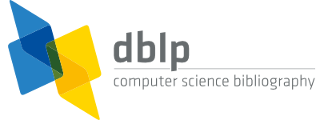


default search action
ACM SIGCSE Bulletin, Volume 31
Volume 31, Number 1, March 1999
- Jane Prey, Robert E. Noonan:

Proceedings of the 30th SIGCSE Technical Symposium on Computer Science Education, SIGCSE 1999, New Orleans, Louisiana, USA, March 14-28, 1999. ACM 1999, ISBN 1-58113-085-6 [contents]
Volume 31, Number 2, June 1999
- Michael B. Feldman:

Inspiring our undergraduate students' asperations. 4-7
- C. Dianne Martin:

From awareness to responsible action (part 1): defining learning objectives and necessary skills. 8-10 - Don Gotterbarn

 :
:
Two approaches to computer ethics. 11-12
- John A. N. Lee:

Multiplying on the chessboard. 13-14
- Tony Clear:

"Eeating Our Seed Corn" or restricting crop diversity? 15-16
- John T. Gorgone:

Information systems accreditation: revisited. 17-18
- Nell B. Dale:

Bibliography relevant to education research. 18-19
- Janet Hartman:

Grant bytes on the web. 20-21
- Renée McCauley:

Teaching the artificial intelligence course: online resources that can help a lot! 21-22
- Deborah Knox:

The computer science teaching center. 22-23
- Henry MacKay Walker:

Finding interesting examples and assignments for CS1/2 assignments. 24-25
- Judith L. Gersting, Frank H. Young:

Sharpening subjective evaluation skills. 26
- Gordon Davies:

Global DL. 27
- Sei-Jong Chung:

Recursive algorithm with C++ program for floating-point arithmetic. 28-30 - S. Travis Nielsen, Douglas M. Campbell:

Current trends in computer science graduate admissions: a survey of the top 108 programs. 31-34 - Fernando G. Castro, Reynaldo Lezama, Albeniz Vasquez:

Playing click. 35-36 - Michael Goldweber

 :
:
A report on the use of HyperTalk in CS1 within a liberal arts setting. 37-41 - Jon A. Elorriaga, Julián Gutiérrez Serrano

 , Jesús Ibáñez, Imanol Usandizaga
, Jesús Ibáñez, Imanol Usandizaga :
:
A proposal for a computer security course. 42-47 - Lewis E. Hitchner:

An automatic testing and grading method for a C++ list class. 48-50 - Zoltan Juhasz:

Using spreadsheets as a simple and effective teaching tool for predicting and visualizing parallel program performance. 51-54 - John S. Robertson:

How many recursive calls does a recursive function make? 60-61 - David Stratton:

Teaching network fundamentals using a simulated network. 62-64 - Martin C. Carlisle

 :
:
Graphics for free. 65-68 - Phil Pfeiffer:

What employers want from students: a report from OOPSLA. 69-70 - Ann E. Kelley Sobel, Joseph C. Hill:

Enhancing the learning environment of deaf students. 71-72 - Maurice Abi-Raad

 :
:
Code of ethics? which one? 73-77 - Kofi Apenyo:

Using the entity-relationship model to teach the relational model. 78-80 - Hubert A. Johnson:

Evaluation of the SEPA in teaching undergraduate software engineering in the traditional computer science curriculum. 81-83 - Ola Ågren:

Teaching computer concepts using virtual machines. 84-85
- Renée A. McCauley, Ursula Jackson:

Teaching software engineering early: experiences and results. 86-91
- Henry MacKay Walker:

Report from the SIGCSE secretary/treasurer. 92-93
Volume 31, Number 3, September 1999
- Carl Erickson, Tadeusz Wilusz, Mats Daniels, Renée McCauley, Bill Z. Manaris:

Proceedings of the 4th Annual SIGCSE Conference on Innovation and Technology in Computer Science Education, ITiCSE 1999, Cracow, Poland, 27-30 June, 1999. ACM 1999, ISBN 1-58113-087-2 [contents]
Volume 31, Number 4, December 1999
- Bruce J. Klein:

Working Group Reports from ITiCSE on Innovation and Technology in Computer Science Education, ITiCSE-WGR 1999, Cracow, Poland, June 27-30, 1999. ACM 1999, ISBN 978-1-4503-7325-8 [contents]

manage site settings
To protect your privacy, all features that rely on external API calls from your browser are turned off by default. You need to opt-in for them to become active. All settings here will be stored as cookies with your web browser. For more information see our F.A.Q.


 Google
Google Google Scholar
Google Scholar Semantic Scholar
Semantic Scholar Internet Archive Scholar
Internet Archive Scholar CiteSeerX
CiteSeerX ORCID
ORCID














